Contents
Appendectomy in modern conditions is the only reliable method for treating most forms of inflammation of the appendix. Among people far from medicine, inflammation of the appendix causes numerous justified and unfounded fears. The information below, available to a wide range of readers, can be used as a reminder before an operation to remove appendicitis.
Fear of appendicitis
The feeling of fear is a natural protective reaction of a person, which helps to avoid dangerous life situations. Fear is a bad adviser in diseases accompanied by pain. Pain is a signal that the body has ceased to cope with an internal problem on its own. Abdominal colic that does not subside for 3-4 hours is a sign of the seriousness of a health problem and one of the symptoms of appendicitis, as well as a reason for an urgent visit to a medical institution.
Causes of pain are always associated with:
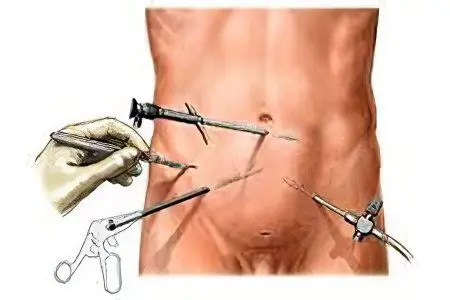
irritation of nerve endings by products of inflammation;
compression (spasms), sprains and injuries of nerve fibers.
Physical pain can usually be controlled with pharmaceuticals. However, without complex treatment, and sometimes radical surgical intervention, it is impossible to stop the pathological process – inflammation of the appendix. With the remaining focus of the disease, the pain will return sooner or later.
Other phobias (according to patient surveys) are associated with fears:
trusting your life to surgeons;
unfavorable outcome of the operation;
remote consequences;
the correctness of the diagnosis.
With regard to the first three phobias, the fears are justified to some extent, but late contacting a medical institution only increases the risks. The operation from a simple procedure turns into a complex manipulation.
As for the doubts about the correctness of the diagnosis, indeed, the signs of appendicitis do not always correspond to the descriptions in the medical literature, and the symptoms characteristic of appendicitis may be a manifestation of other dangerous diseases, for example:
diseases of the gastrointestinal tract – stomach ulcers, duodenal ulcers, blockage of the small intestine, Meckel’s diverticulum (a blind outgrowth of the intestine, similar in appearance to an appendix), appendicular infiltrate, periappendicular abscess, cancer or perforation of the intestine, pancreatitis, cholecystitis;
diseases of the genitourinary system – inflammation or obstruction of the ureters, inflammation of the appendages, pathological spasms during ovulatory cycles;
infectious diseases – typhoid fever, dysentery and others.
Many casuistic diseases masquerade as appendicitis. Diagnostic errors happen, but they are rarely fatal for the patient. With the introduction of laparoscopy into practice, the number of errors has significantly decreased.
Phobias associated with the peculiarities of the physiological state of the patient and the difficulty of diagnosis during this period, namely:
pregnancy – a natural fear for the life of the fetus, which is combined with a distorted compression of the internal organs of the clinical picture;
old age – combined with the layering of a variety of chronic diseases;
children’s age – for obvious reasons, phobias are typical for parents with hypertrophied fears for the health of their child.
Modern diagnostic equipment and surgical technologies make it possible to find optimal, safe treatment suitable for each specific case at any age and under any physiological condition.
Appendectomy. Depending on the clinical situation, the operation is performed urgently or according to plan.
Emergency operation. The indication is an acute stage or exacerbation of chronic inflammation. The operation is carried out two to four hours after the patient arrives at the clinic. The urgency is due to the rapid development of a dangerous condition (peritonitis, perforation of the walls of the process, outpouring of pus into the abdominal cavity).
planned operation. In the case of a ban on emergency intervention, the operation is carried out after the elimination of threats. The time of a planned operation is determined based on the timing of palliative (removing threats) treatment and recovery.
Preoperative period for appendicitis
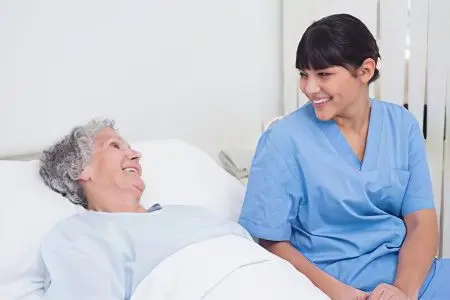
Appendectomy belongs to the category of operations performed urgently, so all the necessary procedures in the emergency room are carried out as quickly as possible.
Register the patient
Patient registration is a prerequisite for staying in a medical institution. To speed up, prepare the necessary documents in advance:
passport of a citizen of the Russian Federation or a document replacing it (military ID);
health insurance policy (mandatory or voluntary);
card of the insurance number of an individual personal account (SNILS);
an outpatient card, if available (usually it is located in the clinic at the place of residence, but sometimes it is handed out).
Some problems with getting a free appendix removal may arise for non-citizens of our country.
This does not mean that they will be denied emergency assistance, however, in order to eliminate the problem, you should obtain an MHI (compulsory medical insurance) policy in advance. To obtain a policy, contact the nearest insurance company that has a good business reputation in the insurance market. A policy in the form of a plastic card is made for a month, and a temporary policy is issued on the day of application.
Attention! For foreign citizens temporarily or permanently residing on the territory of the Russian Federation, a CHI policy is issued on the basis of Art. 10 of the Federal Law of the Russian Federation of November 29.11.2010, 326 N XNUMX-FZ.
The presence of a temporary or permanent compulsory medical insurance policy is mandatory for all categories of citizens admitted to a medical institution.
Additionally, you must submit:
for a refugee – a refugee certificate or a copy of the application for granting this status (complaints about its deprivation);
for a stateless person temporarily residing on the territory of our country – an identity card with a mark on the permission to stay in the Russian Federation.
for a foreign citizen temporarily staying in our country – a passport of the country of residence of the citizen with a mark of the migration service of the Russian Federation on temporary permission to stay in our country.
for a foreign citizen permanently residing in our country – a passport of a foreign state and a residence permit in the Russian Federation.
The problem will be greatly simplified by contacting a clinic that provides paid services, including through voluntary medical insurance (VHI).
Diagnosis of appendicitis
It is carried out by the surgeon in conditions of a limited time period.
Indications for surgery may be the results of a clinical examination with vivid symptoms of an “acute abdomen” without confirmation of a focus of pathology in the appendix. Such a strategy is fully justified, since, in addition to appendicitis, the causes of emergency surgical intervention are diseases of the abdominal organs similar to appendicitis. During the operation, after examining the intestines and abdominal organs, the treatment tactics can be adjusted by the surgeon.
The sequence of diagnostic procedures:
Questioning the patient;
Inspection: general – pay attention to the patient’s posture, his gait, local – the state of the abdominal wall (increase, decrease, symmetry of the sides);
Palpation (palpation) – pay attention to soreness at the place of application of force, and also take pain samples and apply internal palpation – rectal, vaginal;
Percussion (tapping) – used to identify pain and tactile (to touch) sensitivity;
Laboratory blood tests – counting the number of leukocytes, determining the ratio of different types of leukocytes in a stained smear and the erythrocyte sedimentation rate, urine – a general analysis. Other studies may be included as indicated, such as a pregnancy study in women. Unfortunately, standard laboratory studies show only the general picture characteristic of inflammation.
Instrumental methods – plain radiography of the abdomen, radiography or computed tomography with contrast, ultrasound and its modifications.
Differential diagnosis. With an unclear, mild clinic and in the absence of clear indications for emergency appendectomy, the diagnosis is continued until the causes are clarified. The most commonly used method of differential diagnosis is laparoscopy.
In preparation for the operation, the anesthesiologist conducts a study of the cardiovascular system and collects an allergic history in case of intolerance to pharmacological agents for anesthesia.
If necessary, an intravenous drip infusion with an isotonic solution is carried out in order to maintain tone, relieve intoxication and prevent dehydration, as well as insert a probe into the stomach in order to evacuate the contents.
Due to the varying severity of the clinical condition of patients admitted for surgery, the sequence of diagnostic studies may partially change.
Preparation of the surgical field for appendicitis
Preparation includes treatment of the skin of the abdomen, shaving of hairy areas, degreasing and disinfection of the skin in the area of the surgical field.
If the patient is known to be allergic to skin disinfectants, chemicals, and medications prior to surgery, the anesthesiologist will adjust his or her actions.
Operating period for appendicitis
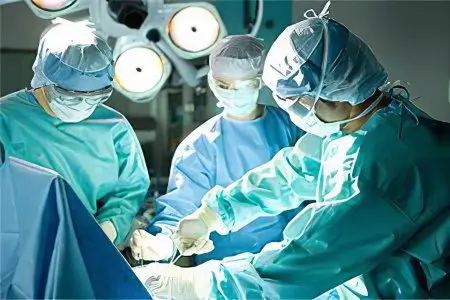
Before the operation, at the request of the patient and his relatives, it is possible to have a conversation about the upcoming manipulation with the provision of information about the essence of the operation, methods of anesthesia and possible complications. But since the operation is urgent, this conversation is sometimes not carried out.
The operating period includes:
introduction of the patient into a state of anesthesia;
layer-by-layer dissection of the abdominal wall;
revision of the abdominal cavity and the organs located in it, examination of the appendix and part of the intestine (about 50 cm before and the same after the place of its discharge);
resection of the appendix, suturing the edges of the removed process;
contraction and suturing of the peritoneum with absorbable threads (sutures are not removed);
skin tightening and intermittent (removable) sutures.
In the presence of complications (outflow of the contents of the process into the abdominal cavity), the cavity is sanitized and temporary drainage is fixed in order to evacuate the inflammation products outside the body. This drainage is removed before the removal of surgical skin sutures, immediately after stabilization of the body.
The time of the operation. There are no standards, it can last from 40 minutes to 2-3 hours, depending on the severity of the pathogenesis, physique, age of the patient, the location of the process in the abdominal cavity and many other factors.
Anesthesia is an important step in the operation. The quality of anesthesia depends on the time of the operation, the speed of healing of the surgical wound, the likelihood of surgical and postoperative complications.
When removing the process, three options for anesthesia are used:
tight infiltrate method;
conduction blockade;
general anesthesia.
All methods, when properly performed, have an adequate analgesic effect. The first two methods involve the presence of the operated person in the mind during the operation, in this regard, they are contraindicated for:
young children – uncontrolled anxiety of a small child interferes with the implementation of an appendectomy;
patients with peritonitis – an extensive operation involves sanitation of the intestines, while reflex tension of the muscles of the abdominal wall is possible;
patients undergoing laparoscopic surgery – manipulations inside the abdominal cavity with a medical instrument in a conscious person cause a gag reflex and spasm of the muscles of the abdominal wall, and muscle relaxants are not used to suppress these phenomena without general anesthesia with controlled ventilation of the lungs.
patients with hyperexcitability, individual intolerance to novocaine and its derivatives.
Although local anesthesia techniques are considered obsolete, they have proven to be effective and safe when skillfully performed.
Tight creeping infiltrate method
Goal – to ensure painless layer-by-layer cutting and stitching of the skin and abdominal wall.
The threshold of pain sensitivity of the intestine is much lower; for its anesthesia, novocaine solution is periodically added to the abdominal cavity, or other drugs are used.
Method principle – layer-by-layer under pressure created by a syringe, impregnation of layers of skin, muscles and tissues of the abdominal wall with a 0,25% solution of novocaine. As a result of injecting the solution under pressure, an extensive novocaine layer is created under the surgical field, blocking the conduction of pain impulses. During the operation, you have to constantly repeat this procedure.
Practical value lies in the simplicity of execution and the possibility of monitoring the main physiological parameters of the operated person without sophisticated medical equipment. The operation can be successfully performed under primitive conditions.
Disadvantages – novocaine does not relieve the gag reflex; during the operation, you have to constantly inject a solution of novocaine.
Regional or conduction anesthesia
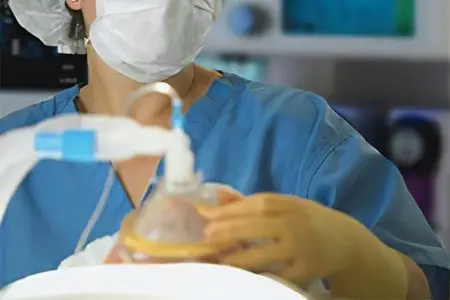
The goal is similar to that of the creeping infiltrate method. The principle is based on the blockade of the conduction of nerve impulses through the nerve bundles that innervate the intestines by introducing painkillers into the space surrounding the nerve ganglion from which the nerve bundles diverge. The technique is difficult compared to tight infiltration. From the anesthesiologist, a good knowledge of the topographic landmarks of the needle insertion site and the location of the nerve nodes is required.
As anesthetics, solutions of different concentrations are used (bupivacaine, lidocaine, ropivacaine).
The advantages of the method:
the speed of the onset of the effect;
small doses of pain medication;
reliable anesthesia, no need to constantly add anesthetic;
the possibility of combining different methods.
Lack of – the complexity of the implementation.
General anesthesia is a modern method of anesthesia
The patient is put into sleep and is taken out of the state of general anesthesia in stages. During the period of the narcotic state, the anesthesiologist controls the cardiovascular and respiratory systems of the operated person.
The stages of anesthesia consist of premedication, administration of drugs, anesthesia itself and removal from this state:
Premedication. Goals – to increase the body’s resistance before surgery, to ensure stable functioning of the heart and lungs during the operation;
Introductory anesthesia or induction. The goals are to gradually bring the operated person to the state of anesthesia, the adaptation of the heart and breathing to the conditions of anesthesia. At this time, if necessary, the introduction of muscle relaxants is carried out and tracheal intubation is done for artificial ventilation of the lungs. The duration of the period is 10-15 minutes;
Maintenance of anesthesia. The goals are to maintain a stable level of basic body functions and the absence of pain sensitivity. The duration of the period corresponds to the time of the operation. During the operation, fractional addition of drugs is allowed;
Withdrawal from anesthesia. The goals are the removal of narcosis metabolites, the restoration of vital functions and the transition of the body to independent functioning.
As drugs for general anesthesia for appendectomy, potent pharmaceuticals with limited access are used.
Possible complications of this stage are controlled by the anesthesiologist. The risk group includes patients with hypersensitivity and concomitant diseases that weaken the work of the heart and respiratory organs.
Layered dissection of the abdominal wall with appendicitis
General principles for performing an incision in the abdominal wall:
The incision is made in layers. This allows you to control the process and, if necessary, dope the blood vessels in time, which reduces the risk of injury to muscles and aponeuroses;
The length of the incision is not strictly regulated, it must be sufficient for the surgeon to work. Too small an incision creates problems during the extraction and revision of internal organs, repositioning of the omentum and intestinal loops into the abdominal cavity, and too large an incision increases the time for tissue stitching and aggravates the risks during the wound healing period;
Muscles, aponeuroses and omentum are separated by a blunt method, that is, a small puncture is made, and then they are separated along the fibers with tools and hands.
At this stage, bleeding is dangerous, not noticed during the separation of the blood vessels of the abdominal wall. With insufficient anesthesia, intra-abdominal pressure reflexively increases, uncontrolled prolapse of the omentum and intestinal loops is possible. All these risks are taken into account by the surgeon.
Revision of the abdominal cavity for appendicitis
After separation of the abdominal wall, the omentum is retracted and an examination of the internal organs is carried out. If necessary, intestinal loops are removed outside the abdomen. In parallel, an inflamed appendix is found.
When examining the appendix, internal organs and intestinal loops, attention is paid to visible morphological defects in the walls of the peritoneum and the organs under study. When changes are detected, the surgeon acts in accordance with the instructions and his own intuition. With uncomplicated appendicitis, the operation enters the final stage. In case of complications, the algorithm of actions is different.
When examining the internal organs under local anesthesia, one should be wary of a gag reflex in response to tightening the intestinal loops. The danger lies in uncontrolled prolapse of intestinal loops, spontaneous rupture of the appendix and infection of the abdominal cavity. These risks are taken into account by the surgeon and the anesthesiologist.
Resection of the appendix
The appendix is pulled up to the edge of the surgical wound and removed beyond it. The process is isolated from the abdominal cavity, the technique is described in detail in textbooks and manuals. As a suture material, catgut or synthetic spontaneously absorbable threads are used.
The principle of applying a submersible purse-string suture to the stump of the appendix is to tighten the process so that the edges of the wound sink into the stump, and the outer side of the process is connected by serous membranes to the center. This method of suturing allows you to expect the fastest possible healing and sealing of the appendix.
Risks are associated with possible contamination of the abdominal cavity, instruments and surgical linen due to inaccurate separation of tissues, as well as with the failure of surgical sutures and knots.
Stitching of the surgical wound after appendectomy
The connection of the abdominal wall is made with threads that dissolve after a while, and the skin is stitched together with intermittent sutures (on average, 7-10 stitches are performed). Strong silk or synthetic threads are used as suture material. The stitches on the skin are removed after 7-10 days. Possible risks are associated with breaking threads and knots.
Postoperative period

The recovery period lasts from the end of the operation to the removal of sutures on the skin. The duration of the period increases with complex appendectomy. The sequence of actions of medical staff with uncomplicated appendicitis is quite simple.
In the early postoperative period (first day):
carry out (if necessary) detoxification of the patient’s body;
watch for signs of possible postoperative bleeding, bowel and/or bladder paresis.
In the middle and late postoperative period (on the second – tenth day):
monitor the restoration of the functions of the patient’s physiological functions (defecation, urination), if necessary, take measures;
monitor the possible development of postoperative complications (control of body temperature, appetite, the state of postoperative sutures, the presence of pain).
How long do they stay in the hospital after an appendectomy?
After an uncomplicated operation, the patient stays in the hospital for no more than ten days. You can get up after the operation with the permission of the doctor, usually on the third or fourth day (individual recommendation!). To prevent the seams from coming apart, sometimes you should wear a bandage or tie a towel around your stomach. Drinks are given on the first day after the operation. From the second day, nutrition is shown according to the diet recommended by the dietitian.
Inform your doctor promptly if:
inability to defecate and / or urinate without strong straining;
pain in the abdomen and in the suture area;
wetting seams and discomfort when moving.
When are stitches removed after appendectomy?
They are removed after filling the surgical wound with healthy granulation (crust). Under normal conditions, this is the seventh, sometimes the tenth day. The stitches are removed in the treatment room. The patient is discharged only after the stitches are removed. Attention! A few days after discharge from the hospital, one should be careful with physical exertion – even in a well-healed surgical wound, the edges can diverge.
What to do if the seam has parted after the removal of appendicitis?
The reason is non-compliance with the regimen after discharge from the hospital. Both internal and external seams can separate.
1. You can determine the rupture of the internal sutures (on the abdominal wall) by the following signs:
protrusion (hernia) of the skin in the area of the surgical wound, while the skin is intact;
with light pressure on the protrusion of the abdominal wall, a jelly-like or slightly harder formation is felt – this is an omentum;
pain that provokes vomiting is a sign of intestinal loops coming out under the skin, but usually the omentum prevents the intestines from prolapsed.
Patient actions:
Call an ambulance;
Take a horizontal position on a hard surface;
If, after taking a horizontal position, the protrusion went inward, tie a towel around the stomach;
Calmly wait for the doctor: anxiety and straining only exacerbate the divergence of the wound.
2. You can determine the divergence of the external (skin) sutures by the following signs:
at the site of the rupture, a red (scarlet) wound gapes – this is the abdominal wall, it has a seam that prevents intestinal prolapse;
the site of the wound is bleeding, or the wound is dry.
Patient actions:
Take a horizontal position, call an ambulance;
Cover the wound with a sterile napkin, you can’t put pressure on it, in contrast to the situation with the divergence of the internal seams.
Complications after removal of appendicitis

Complications after appendectomy are divided into early and late. We will focus on the main manifestations of complications that sometimes bother patients after removal of the appendix.
Temperature after appendicitis surgery
Subfebrile fever is a frequent companion of inflammation of the appendix and one of the symptoms of the disease. An increase in temperature is a signal of the presence of a focus of inflammation. At the first stage of the disease, this is a useful signal – it means that the body resists. A short-term increase in temperature after removal of appendicitis is not dangerous, it disappears on its own or after several medical procedures.
The danger is hyperthermia after removal of appendicitis (within a month), if it occurs against the background of:
vomiting;
constipation or diarrhea;
pain in the abdomen;
disturbances of consciousness;
increased sweating.
In some cases, the temperature after removal of appendicitis lasts a very long time, sometimes up to three to six months. In this case, it is necessary to conduct an in-depth examination. Perhaps the reason is a reflex violation of thermoregulation.
Pain after appendicitis surgery
Pain is the result of inflammation of the sutures, the formation of adhesions or incipient peritonitis. It is possible to save pain from concomitant pathology, which was not eliminated during appendectomy.
You need to contact the surgeon at the clinic at the place of residence, or the surgeon who performed the operation.
Adhesions after appendicitis surgery
Adhesions are fibrous tissue, the result of adhesive inflammation. They lead to a connection between the serous membranes of different loops of the intestine. The causes of adhesive inflammation are unpredictable, sometimes the pathology is provoked by microorganisms that have entered the abdominal cavity during the operation, but it is believed that adhesions occur in sedentary people, as well as in old age.
Adhesions formed on the intestines after appendicitis are manifested by increased pain when the intestines are overflowed with food and gases, as well as with increased peristaltic contractions of the intestines. Adhesions are difficult to treat because the fibrous tissue of the adhesions is riddled with blood vessels and nerves.
Peritonitis after appendicitis
Peritonitis occurs as a result of perforation of the process. Accordingly, the operation to remove appendicitis is carried out taking into account the severity of pathogenesis, while sanitizing the intestines, applying drainage, maintaining a constant outflow of inflammatory exudate, and prescribing complex treatment in the postoperative period.
Peritonitis after appendectomy – a phenomenon predicted in individuals:
old age;
with chronic pathologies;
with a history of severe preoperative condition.
Symptoms of peritonitis are high fever, soreness and hardness of the abdominal wall, large-scale intoxication.
Incisional hernia after appendicitis
Postoperative hernia is the result of a rupture of the abdominal wall at the site of the surgical incision some time after the operation. Hernia is the result of a combination of the following factors: poor adhesion of the edges of the surgical wound, severe straining or blunt trauma to the abdomen in the area of the surgical wound. It is manifested by a protrusion of the abdominal wall at the site of the postoperative suture. The actions of a person who has a hernia after appendicitis are similar to those recommended for patients with a divergence of internal sutures (see above).
Rehabilitation and recovery after removal of appendicitis
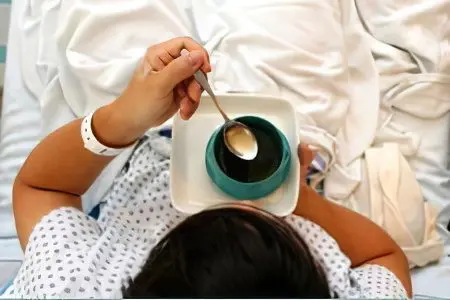
In uncomplicated appendectomy surgery, the period from surgery to return to work is on average three weeks, with the first week spent in the surgical department.
There are no general recommendations on how to behave after an appendicitis operation. Some patients get up the next day after the intervention and begin to move around, others need several days for this. Recovery is faster in young and lean people.
General recommendations relevant for all categories of recovering after appendectomy without complications:
take short walks;
consult your doctor in which cases it is necessary to wear a postoperative bandage (usually it is indicated for obese people or during long movements);
do moderate exercise, swim (immersion in water is possible after the formation of a scar – compaction at the site of the skin incision);
sex is possible two weeks after the removal of appendicitis;
the diet during the first month after surgery should consist of easily digestible food.
Rehabilitation for complications after appendectomy is carried out based on the individual characteristics of the pathology and the patient.









